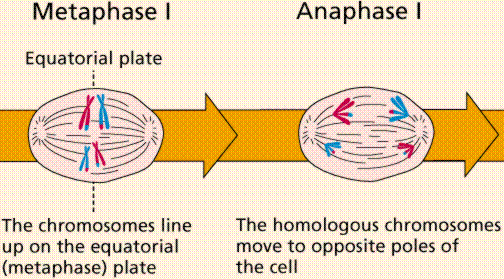Website can be closed on 12th to 14th Jan 2025 due to server maintainance work.

Experiment: Microscopic Analysis of Metaphase I and Anaphase I in Meiosis
Aim:
To observe and identify the stages of metaphase I and anaphase I in meiosis using microscopy.
Materials:
1. Microscope with high-power and oil immersion objectives
2. Prepared slides of meiotic cells undergoing metaphase I and anaphase I (e.g., stained onion root tip cells)
3. Coverslips
4. Kimwipes or lens paper
5. Pen and notebook for recording observations
Experimental Procedure:
1. Place a prepared slide of meiotic cells undergoing metaphase I and anaphase I on the microscope stage.
2. Start with low-power magnification and focus on the area of interest.
3. Switch to high-power magnification to observe individual cells in detail.
4. Identify and record the characteristic features of metaphase I and anaphase I stages.
5. Pay attention to chromosome alignment and segregation during metaphase I and anaphase I.
6. Take note of any visible differences in chromosome behavior between the two stages.
7. Draw and label diagrams of representative cells at metaphase I and anaphase I to document your observations.
Observations:
– Metaphase I: Homologous chromosomes align along the cell equator in pairs, forming tetrads or bivalents.
– Anaphase I: Homologous chromosomes separate and move toward opposite poles of the cell, driven by spindle fibers.
Results:
– Metaphase I demonstrates the alignment of homologous chromosomes, ensuring proper segregation during anaphase I.
– Anaphase I features the separation of homologous chromosomes, resulting in the distribution of genetic material to daughter cells.
– Chromosome segregation during anaphase I contributes to genetic diversity by generating haploid daughter cells with unique genetic combinations.
Conclusion:
Observing metaphase I and anaphase I stages in meiosis provides insights into chromosome segregation and genetic diversity. These events are crucial for producing haploid gametes with diverse genetic combinations, essential for sexual reproduction and species evolution.
